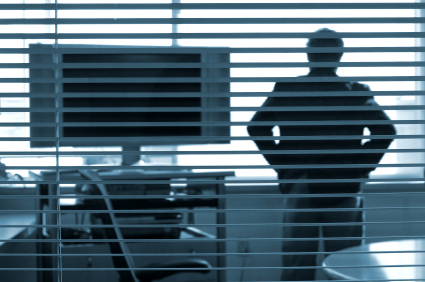
 From www.solarday.com.
From www.solarday.com.
The bottom line of running a successful business is to make all your dollars count. Cutting back on unnecessary energy use keeps hard-earned money in your pocket. Here are some cool summer office energy-saving tips, from a home office to the company HQ. You should also check out the incentives and rebates available to you from your state and your local utility.
You can find out how to take an energy audit at www.solarday.com as well as explore additional energy options with electricity produced by a solar PV installation.
General Tips
– Whenever possible don’t use large equipment during the peak hours of 3 p.m. to 7 p.m.
– Turn equipment and lights off after hours.
– Always choose ENERGY STAR® products whenever possible.
– Set energy-saving features on all your office equipment to put them into sleep mode when not in use.
– An energy audit might be the best investment you can make for your business.
Cooling and Ventilation Systems – Improve the Efficiency
– Set the thermostat in your workspace to 78 degrees during work hours, and raise the setting to 85 degrees when the space is unoccupied. The energy savings can be significant – as much as 2 percent of your air conditioning costs for each one degree that you raise the thermostat. By example: If all businesses in California set their thermostats to a higher temperature, the State would save 770 megawatts for every 2 degrees.
– Use a programmable thermostat and make it easy to adjust the settings as well as regulate the temperature when you are closed to avoid unnecessary cooling costs. Consider a locking cover over the thermostat to avoid having employees change temperature settings.
– Close window blinds to shade your rooms from direct sunlight.
– Allow your workers to wear comfortable clothing during hot weather. It makes little sense to keep a room cold enough that workers must wear suits and coats.
– To save energy, keep your exterior and freight doors closed as much as possible. Consumers frequently complain about retailers who run their air conditioning on high to keep their stores as cold as possible while leaving their doors wide open.
– Keep your cooling and ventilation systems tuned. Maintain a regular filter replacement and cleaning schedule. Don’t forget to check ducts and pipe insulation.
Install window film, solar screens or awning in south and west facing windows
– Solar control window films applied to existing glass in windows and doors is an effective method to reduce peak demand during hot months and conserve energy anytime air conditioning might be required. In addition to the energy management benefits, the use of these films can also reduce exposure to ultraviolet radiation and reduce glare. Visit the International Window Film Association for more information.
– Install ceiling fans – they make it feel at least four degrees cooler during the summer.
– When buying new cooling and ventilation units – choose ENERGY STAR. They are 20 to 30 percent more efficient than older models.
– Rewire restroom fans to operate when the lights are turned on.
– Install an air conditioning-economizer to bring in outside air when it’s cool.
– Insulate water heaters and supply pipes.
– If possible, install ceiling and wall insulation. You will save money on your monthly utility bills and your employees will be more comfortable.
– Install ENERGY STAR labeled reflected “Cool Roof” roofing materials.
Lighting – The Right Light for the Right Task
– Many offices, stores or factories can easily reduce lighting without affecting productivity. Turn off as many unnecessary lights as possible. Use task lighting instead of overhead lighting, and light only those areas that are needed at the time. Providing the right lighting can save up to 15 percent on your lighting bill.
– Again, make sure that equipment and lights are turned off after hours.
– Replace old fluorescent lights with newer, more efficient models with electronic ballasts (such as retrofit T12 lights with magnetic ballasts to T8 lights and electronic ballasts).
Use Compact Fluorescents
– Replace your high-use incandescent light bulbs with compact fluorescent lights. A compact fluorescent light uses 75 percent less electricity to produce the same amount of light as an incandescent bulb. The compact fluorescent will last about 10,000 hours as opposed to the 600 to 1,000 hour average life of an incandescent. By replacing a 100-watt incandescent with an equivalent 25-watt compact fluorescent, you can save more than $90 per bulb in electricity costs over the 10,000-hour lifetime of the compact fluorescent.
– Make sure that bulbs, fixtures, lenses, lamps and reflective surfaces are cleaned regularly. By removing grease, dust and other dirt, you can increase the output of your lights.
– Install automatic, occupancy sensor room-lighting controls to turn lights on or off depending on occupancy or time of day.
– Change out incandescent or fluorescent exit signs with LED exit signs.
Computers and Other Office Equipment
– Turn off your computers and any other office equipment when you’re not using them, especially overnight and weekends. This practice costs nothing and can potentially save as much as $44 per year, per computer, depending on what you pay per kilowatt-hour. “Smart” power strips are being marketed that sense the presence or absence of office workers and turn the attached equipment on and off accordingly.
– For computer protection during a power curtailment, your company might invest in “Uninterruptible Power Supplies,” (also known as UPS systems) which combine surge protectors and battery packs. These will run a computer for a short time to allow a worker to save files and prevent the loss of information when the power goes out.
– To be as energy efficient as possible, only buy office equipment that displays the ENERGYSTAR logo.
– Choose settings that automatically switch the computer monitor into sleep or “power-down” mode when it hasn’t been worked on for a preset amount of time. Shorten the delay time before your monitor automatically goes into sleep mode.
– Consider having employees use lap top computers since they use up to 90 percent less energy than a standard computer.
– If it works for your business, consider ink-jet printers which also use 90 percent less energy than laser printers.
Purchase the proper sized copier for your business needs
– Choose a flat-panel computer monitor rather than a regular cathode ray tube (CRT) monitor. Some flat-panel liquid crystal display (LCD) monitors use considerably less electricity than comparably-sized CRT models, but the extra first cost is still much more than the lifetime energy savings. However, prices for LCD monitors have been dropping, so they may be cost effective. If you have to buy a CRT monitor, buy the smallest monitor that will meet your needs. The bigger the monitor, the more energy it uses. For example, a 17-inch monitor consumes 35 percent more electricity than a 14-inch monitor.
More energy saving tips at: www.solarday.com.
By Annie B. Bond, best-selling and award-winning author of five green living books, thousands of blogs, and all the tips in the Greenify Everything app. Called “The Godmother of Green” by Martha Stewart Sirius Radio.




[…] This post was mentioned on Twitter by energysavingguy. energysavingguy said: Cool Summer Office Energy-Saving Tips | Green Chi Cafe http://bit.ly/daTyet […]
This is great. You will probably save energy with this tips.
It is so valuable for us to save energy these days. Whether at home, at school, or inside the workplace, we must make an effort to reduce energy consumption, and protect Mother Earth.
If you want usage home energy savers , in your home and business.We are the premier online superstore for clean green living.
This is
the great blog, I’m reading them for a while, thanks for the new posts!
I’ll
post the same information to my blog, thanks for ideas and great article.
I’ll
post the same information to my blog, thanks for ideas and great article.
When summer comes, most of us really need a well ventilated
place to have a comfortable feeling. From this blog, we could gain some useful
tips on how to have a ventilated place without using electricity so much.
Comments are closed.